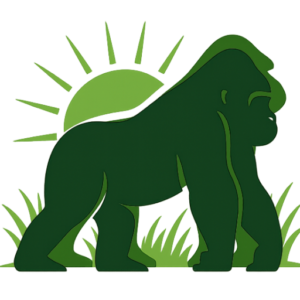Mount Karisimbi Hike – Facts, Costs & Best Time To Go
Introduction to Mount Karisimbi
Rising majestically to an altitude of 4,507 meters (14,787 feet), Mount Karisimbi stands as Rwanda’s highest peak and one of the most captivating summits in the entire East African region. It forms part of the Virunga Volcano Range, a chain of eight magnificent volcanoes shared by Rwanda, Uganda, and the Democratic Republic of Congo. The name “Karisimbi” comes from the Kinyarwanda word “amasimbi,” meaning “white shell,” inspired by the white snow that sometimes graces its summit during colder months.
Climbing Mount Karisimbi is one of the most thrilling experiences in Volcanoes National Park, where adventure, endurance, and nature intertwine. This challenging two-day hike takes travelers through misty forests, volcanic ridges, and sub-alpine vegetation, offering breathtaking views of the Virunga landscape. It’s not just a trek; it’s an immersion into Rwanda’s natural beauty, an adventure that blends physical challenge with a deep sense of serenity.
The Beauty and Location of Mount Karisimbi
Mount Karisimbi lies within the protected boundaries of Volcanoes National Park in northwestern Rwanda. It borders the Democratic Republic of Congo and stands between two other spectacular volcanoes — Mount Bisoke and Mount Mikeno. The mountain is surrounded by lush rainforest and bamboo vegetation that shelter a wealth of wildlife, including golden monkeys and mountain gorillas.
The trek begins from the Kinigi Park Headquarters, which is roughly a 2.5-hour drive from Kigali. This makes it easily accessible for both international travelers and those already exploring other Rwandan attractions like gorilla trekking.
The Mount Karisimbi Hiking Experience
The Mount Karisimbi hike is a two-day expedition organized by the Rwanda Development Board (RDB), with professional rangers and guides accompanying each group. The trek is divided into two main stages — the ascent to the base camp and the final push to the summit.
Day 1 – The Ascent to Base Camp
The journey begins early in the morning after a short briefing at the park headquarters in Kinigi. The first section of the trail winds through thick bamboo forest, teeming with birdlife, orchids, and the occasional wildlife sighting. As the altitude increases, the vegetation changes to Hagenia woodland and later to sub-alpine moorland.
The first day’s hike typically takes six to seven hours, depending on your pace, before reaching the Karisimbi Base Camp at around 3,700 meters. This is where hikers spend the night in tents surrounded by mist, under a starlit sky, and within the tranquil silence of the volcanoes. Temperatures drop significantly after sunset, so warm clothing is essential.
Day 2 – The Final Push to the Summit
The second day starts early — usually around 4:00 AM — to allow hikers to reach the summit at sunrise. The final stretch is steep and rugged, but the sense of anticipation and the crisp mountain air make it worth every step. Reaching the summit of Karisimbi is an emotional moment, offering panoramic views of the Virunga Volcanoes, the Musanze plains, and, on clear mornings, even Lake Kivu shimmering in the distance.
After enjoying the views and taking photos, hikers descend back to the base camp for a short rest before continuing to the starting point, where they receive their trekking certificates.
How Much Does the Karisimbi Hike Cost?
The Mount Karisimbi hiking permit costs $400 per person, issued by the Rwanda Development Board. This fee includes park entry, professional guides, and ranger escorts throughout the journey.
However, additional expenses should be factored in for logistics and comfort:
-
Porters: $15–$25 per day (highly recommended for carrying backpacks and gear).
-
Camping Equipment: Most tour operators provide tents, sleeping bags, and cooking equipment.
-
Transport: A private transfer from Kigali to Kinigi and back ranges from $100–$150.
-
Meals: Typically arranged by your tour operator or cook accompanying the group.
On average, the total cost for a well-organized Karisimbi hike ranges between $600 and $1,000 per person, depending on the service level and group size. Luxury travelers opting for pre- and post-hike accommodation in high-end lodges may spend upwards of $1,500.
Fitness Level and Hiking Difficulty
The Karisimbi hike is classified as challenging and is recommended for travelers with a good level of fitness. The high altitude and steep trails require endurance, though you don’t need to be a professional climber. Hikers should be prepared to walk for 6–8 hours a day with significant elevation gain.
Altitude sickness can affect some travelers due to the mountain’s high elevation, so spending an extra day in Musanze to acclimatize is highly advisable. The hike is safe and guided, but rain and slippery terrain can make it physically demanding.
What to Pack for the Mount Karisimbi Hike
Packing the right gear is essential for a successful trek. Here’s what every hiker should bring:
-
Sturdy hiking boots and warm socks
-
Thermal clothing and a waterproof jacket
-
Gloves, hat, and fleece layers for cold nights
-
A sleeping bag suitable for low temperatures
-
Headlamp or flashlight
-
Trekking poles
-
Energy snacks and refillable water bottles
-
First aid kit and personal medication
Hiring a porter not only lightens your load but also supports the local community.
Best Time to Hike Mount Karisimbi
The best time to hike Mount Karisimbi is during the dry seasons, when the trails are less muddy and the skies are clearer. The dry seasons fall between:
-
June to September – The main dry season, ideal for clear views and comfortable trekking.
-
December to February – The short dry season, with fewer crowds and mild temperatures.
Hiking during the rainy months (March–May and October–November) is still possible but more challenging due to slippery terrain and heavy mists.
Combining the Karisimbi Hike with Other Activities
The Karisimbi hike fits perfectly into a wider Volcanoes National Park itinerary. Many travelers combine it with:
-
Gorilla trekking – A life-changing experience meeting mountain gorillas in the wild.
-
Golden monkey trekking – A lighter adventure in the bamboo forests.
-
Mount Bisoke crater hike – A one-day volcanic hike offering scenic views.
-
Cultural visits – Interactions with local communities at the Iby’Iwacu Cultural Village.
Final Thoughts
The Mount Karisimbi hike is one of Rwanda’s most exhilarating and rewarding adventures. It challenges your stamina, captivates your spirit, and offers moments of pure connection with nature. Standing atop Rwanda’s highest point, surrounded by clouds and the timeless silence of volcanoes, is a feeling that stays with you long after the trek ends.
For travelers planning their Rwanda safari in 2025, Karisimbi offers the perfect combination of adventure, solitude, and natural wonder — a journey into the very heart of Rwanda’s wild beauty.





